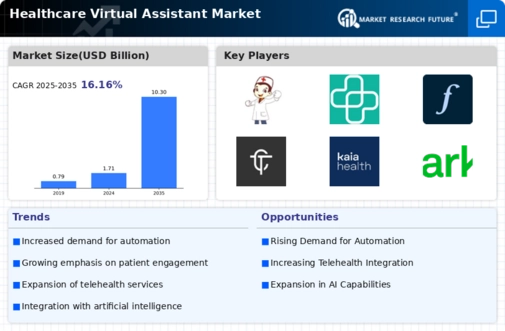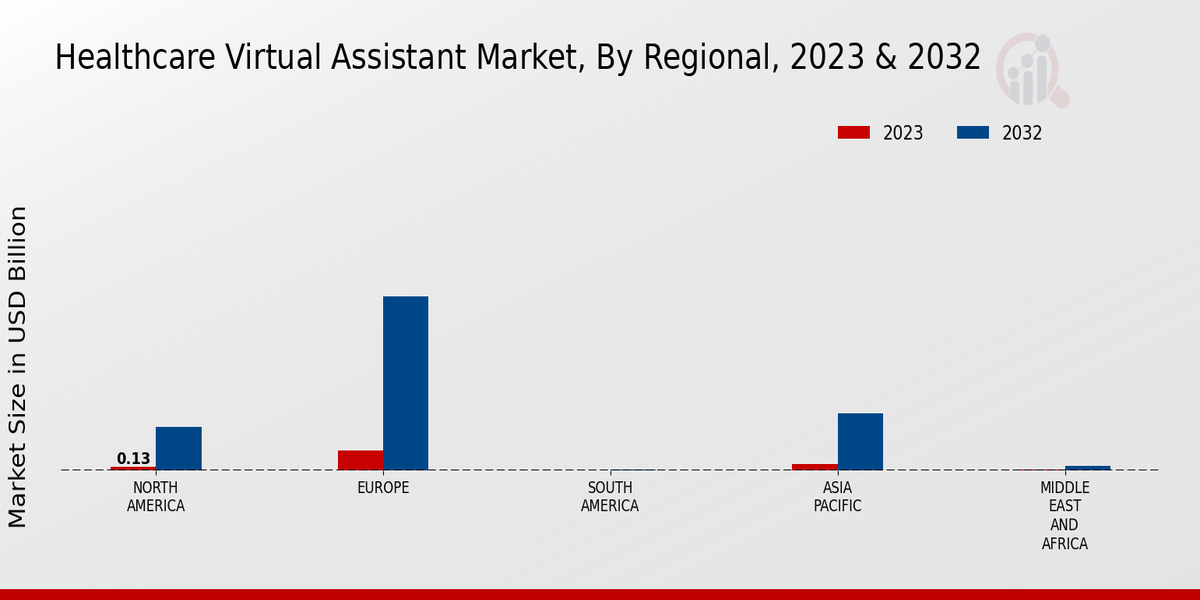Market Growth Projections
The Global Healthcare Virtual Assistant Market Industry is poised for remarkable growth, with projections indicating a rise from 1.71 USD Billion in 2024 to 10.3 USD Billion by 2035. This trajectory suggests a robust compound annual growth rate of 17.78% from 2025 to 2035. The increasing adoption of virtual assistants across healthcare settings, driven by technological advancements and a focus on patient engagement, is likely to sustain this growth. As healthcare providers continue to integrate virtual assistants into their operations, the market is expected to expand significantly, reflecting the evolving landscape of healthcare delivery.
Increased Focus on Patient Engagement
The Global Healthcare Virtual Assistant Market Industry is significantly influenced by the increased focus on patient engagement strategies. Healthcare organizations recognize the importance of maintaining continuous communication with patients to improve health outcomes. Virtual assistants serve as a bridge between patients and healthcare providers, facilitating timely information exchange and personalized care. This emphasis on engagement is expected to propel the market forward, as organizations invest in virtual assistant technologies to enhance patient satisfaction and adherence to treatment plans. As a result, the market is likely to witness substantial growth in the coming years.
Rising Demand for Telehealth Services
The Global Healthcare Virtual Assistant Market Industry experiences a notable surge in demand for telehealth services, driven by the increasing preference for remote healthcare solutions. Patients are increasingly seeking virtual consultations, which necessitates the integration of virtual assistants to streamline communication and appointment scheduling. In 2024, the market is projected to reach 1.71 USD Billion, reflecting the growing reliance on digital health solutions. This trend is likely to continue as healthcare providers adopt virtual assistants to enhance patient engagement and improve operational efficiency, thereby contributing to the overall growth of the market.
Cost-Effectiveness of Virtual Assistants
Cost-effectiveness is a crucial driver for the Global Healthcare Virtual Assistant Market Industry, as healthcare providers seek to optimize operational costs while maintaining high-quality patient care. Virtual assistants can automate routine tasks, such as appointment scheduling and follow-up reminders, thereby reducing administrative burdens on staff. This efficiency not only lowers operational costs but also allows healthcare professionals to focus on more complex patient care activities. As organizations increasingly recognize these benefits, the adoption of virtual assistants is expected to rise, contributing to a projected CAGR of 17.78% from 2025 to 2035.
Technological Advancements in AI and NLP
Technological advancements in artificial intelligence and natural language processing are pivotal in shaping the Global Healthcare Virtual Assistant Market Industry. These innovations enable virtual assistants to understand and respond to patient inquiries more effectively, enhancing user experience. As AI technology evolves, virtual assistants become more capable of handling complex tasks, such as symptom checking and medication reminders. This evolution is expected to drive market growth significantly, with projections indicating a rise to 10.3 USD Billion by 2035. The integration of advanced AI capabilities is likely to attract more healthcare providers to adopt virtual assistants, further expanding the market.
Regulatory Support for Digital Health Solutions
Regulatory support for digital health solutions plays a significant role in the Global Healthcare Virtual Assistant Market Industry. Governments and health authorities are increasingly endorsing the use of virtual assistants to improve healthcare delivery and accessibility. Initiatives aimed at promoting telehealth and digital health technologies create a favorable environment for the growth of virtual assistants in healthcare settings. This regulatory backing not only encourages investment in virtual assistant technologies but also fosters innovation within the industry. As a result, the market is poised for robust growth as stakeholders capitalize on these supportive measures.












